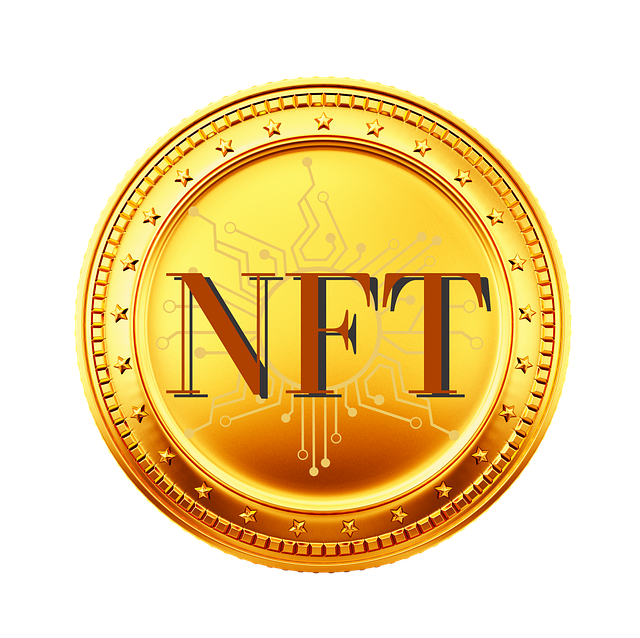Crypto With the Best Future: An In-Depth Analysis
Author: Jameson Richman Expert
Published On: 2025-08-29
Prepared by Jameson Richman and our team of experts with over a decade of experience in cryptocurrency and digital asset analysis. Learn more about us.
When I first began exploring the expansive world of cryptocurrencies, I quickly recognized that not all digital assets hold equal promise for long-term success. The rapidly evolving crypto landscape is a complex ecosystem shaped by technological innovations, regulatory developments, macroeconomic factors, and market sentiment. As an experienced participant in crypto investing and trading, I’ve learned that identifying the most promising cryptocurrencies involves a blend of art and science—balancing fundamental analysis with market intuition. This comprehensive article delves into the core factors that determine a crypto project’s future potential, backed by insights from my journey and systematic evaluation methods. It aims to equip readers with a nuanced understanding of how to recognize projects that could redefine finance, technology, and societal interactions in the coming years.

Evaluating the Future of Cryptocurrencies: A Systematic Framework
Successful long-term crypto investment hinges on a rigorous evaluation framework that goes beyond surface-level hype. Initially, many newcomers fall prey to FOMO (Fear of Missing Out) and short-term trading sentiment, which often leads to volatile outcomes. Over time, I adopted a multi-dimensional approach centered on core principles such as:
- Use Case and Utility: Does the project solve real-world problems or improve existing systems? For instance, Bitcoin introduced a decentralized store of value, providing a hedge against inflation and central bank policies, while Ethereum’s smart contracts revolutionized programmable finance by enabling decentralized applications (dApps) and DeFi protocols.
- Technological Robustness and Innovation: Is the codebase secure, scalable, and adaptable? Projects like Solana and Cardano focus on high throughput, low latency, and energy efficiency—addressing critical scalability bottlenecks that hinder mass adoption of blockchain networks.
- Development Activity and Roadmap Progress: Regular updates, active GitHub repositories, and transparent roadmaps reflect committed teams and project vitality. Consistent innovation and responsiveness to community feedback are signs of a resilient project.
- Community Support and Network Effect: A vibrant, engaged community often signals strong organic growth, advocacy, and resilience against market swings. Community governance models also contribute to decentralization and stakeholder alignment.
- Tokenomics and Incentive Structures: Well-designed token economies promote sustainable network participation and align incentives among stakeholders, ensuring longevity and resilience of the ecosystem.
- Regulatory Environment and Compliance: Projects aligning with current and anticipated regulations are better positioned for longevity, especially as governments tighten oversight on securities, privacy, and anti-money laundering measures.
For example, Binance Coin (BNB) benefits from Binance’s expansive ecosystem, including DeFi platforms, NFT marketplaces, and cross-chain projects—boosting its utility and resilience. Evaluating such factors systematically has helped me distinguish projects with enduring value from fleeting trends.
In addition, engaging with reputable sources, participating in community forums like Reddit and Telegram, and following industry leaders on Twitter provide real-time insights. Remember, diversification across different sectors—DeFi, NFTs, infrastructure, Layer 2 solutions—is key to managing risk and capturing growth opportunities. A well-rounded portfolio mitigates exposure to sector-specific downturns and enhances resilience in volatile markets.
Emerging Trends and Technologies Poised to Shape the Future
The future of crypto is being shaped by several groundbreaking technological trends that promise to expand adoption and functionality. Staying ahead requires understanding these innovations and their implications:
Decentralized Finance (DeFi) Revolution
DeFi continues to dismantle traditional financial intermediaries by enabling permissionless lending, borrowing, trading, and yield generation. Protocols like Uniswap, Aave, and Compound are pushing the boundaries of financial primitives, such as flash loans, liquidity pools, and decentralized liquidity aggregation. As security protocols improve and user interfaces become more intuitive, DeFi is poised to facilitate mainstream financial services—including savings accounts, insurance, derivatives, and asset management—potentially replacing or supplementing legacy banking systems. Moreover, DeFi’s composability allows for innovative financial products that can be combined and reconfigured rapidly, creating an ecosystem of interconnected services.
NFTs and Virtual Economies
NFTs have transcended digital art, evolving into vehicles for ownership rights across gaming, intellectual property, virtual worlds, and real estate. Platforms like OpenSea, Rarible, and Foundation enable artists and creators to monetize digital assets with embedded royalties, ensuring ongoing income streams. NFT integration within metaverse projects like Decentraland and The Sandbox is redefining concepts of community, identity, and ownership—foreshadowing a future where physical and digital assets seamlessly intertwine. Additionally, NFTs are increasingly used for brand collaborations, exclusive events, ticketing, and access-controlled content, expanding their use cases into marketing and brand loyalty domains. Technological advances in interoperability and standards like ERC-721 and ERC-1155 are further enhancing cross-platform compatibility and asset liquidity.
Layer 2 Solutions and Blockchain Scalability
Addressing blockchain scalability and high fees remains a central challenge. Layer 2 protocols—such as Optimistic Rollups, zk-Rollups, state channels, and sidechains—are designed to process transactions off-chain and settle periodically on mainnets, drastically increasing throughput and reducing costs. Ethereum 2.0’s shift to proof-of-stake (PoS) aims to improve security, energy efficiency, and scalability—supporting thousands of transactions per second—thus enabling complex dApps and DeFi protocols to operate smoothly at scale. Similarly, high-performance chains like Solana, Avalanche, and Polygon are attracting developers building data-intensive decentralized applications (dApps), including gaming and enterprise solutions. These solutions are vital for mainstream adoption, especially in sectors like gaming, supply chain, cross-border payments, and digital identity management.
Sustainability and Blockchain for Real-World Impact
Energy consumption and environmental impact are increasingly scrutinized. Projects like Chia, which employs proof-of-space, and Cardano, utilizing proof-of-stake, focus on sustainability by reducing energy requirements. Moreover, blockchain applications in supply chain management (e.g., VeChain, Waltonchain), energy trading, and carbon credits demonstrate tangible benefits for environmental and economic sustainability. Governments and institutions are beginning to recognize blockchain’s potential for transparency, efficiency, and accountability, leading to increased institutional interest and support. The integration of IoT devices with blockchain for real-time data verification further enhances trust and operational efficiency in sectors like agriculture, manufacturing, and logistics.
Navigating Regulatory Waters: Opportunities and Challenges
Regulatory landscapes are evolving rapidly and significantly influence the trajectory of cryptocurrencies. Countries like Switzerland, Singapore, and members of the European Union are at the forefront of crafting clear, supportive frameworks that foster innovation while safeguarding investors. Conversely, jurisdictions with restrictive policies—such as China’s crackdown on crypto trading and mining—can hinder growth or push activity underground. Projects that prioritize compliance—adhering to AML (Anti-Money Laundering), KYC (Know Your Customer), securities regulations, and data privacy standards—are more likely to enjoy sustained growth and mainstream legitimacy.
The advent of Central Bank Digital Currencies (CBDCs) exemplifies how governments are actively exploring digital assets to enhance monetary systems. CBDCs aim to promote financial inclusion, reduce transaction costs, and facilitate secure cross-border payments. Understanding the regulatory environment helps investors anticipate risks, identify compliant projects, and leverage opportunities arising from legal clarity and institutional backing. Furthermore, regulatory clarity can boost investor confidence, attract institutional capital, and foster broader adoption of blockchain technologies.

Final Thoughts: Emphasizing Long-Term Vision and Adaptability
Throughout my journey in crypto, one lesson remains clear: patience, strategic foresight, and a long-term perspective are vital. The crypto markets are inherently volatile, characterized by cycles of hype, correction, and innovation. Projects with strong fundamentals—solid use cases, innovative technology, active development teams, and community support—tend to withstand market turbulence and capitalize on growth phases. Successful investors stay informed, continually update their knowledge base, and adapt strategies in response to technological and regulatory developments.
Diversification across sectors and geographic regions, coupled with ongoing education through reputable news outlets, industry reports, and active community engagement, is essential. Keeping a close eye on regulatory developments and technological advancements enables adaptive decision-making, which is crucial for enduring success. Building resilience and staying informed can help navigate the inevitable volatility and position oneself to benefit from transformative shifts in the industry.
To explore emerging opportunities, you can register on reputable exchanges. Start with Binance through this official Binance registration link. For access to innovative projects, liquidity pools, and early-stage tokens, platforms like MEXC, Bitget, and Bybit are excellent gateways. These platforms not only facilitate trading but also support blockchain ecosystems through grants, incubator programs, and strategic listings, fostering an environment ripe for innovation.
In conclusion, the future of cryptocurrencies is promising but demands ongoing vigilance, informed decision-making, and adaptability. By cultivating patience, leveraging technological trends, and aligning with evolving regulatory frameworks, investors and enthusiasts can position themselves to capitalize on the next wave of blockchain innovation and mainstream adoption. The path ahead is dynamic and filled with opportunities—those who remain adaptable and well-informed stand to benefit the most in this revolutionary industry.